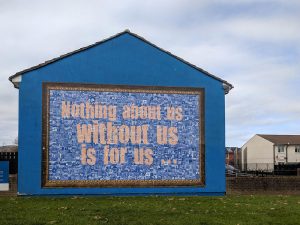
November 14, 2019; Illinois Times
For most nonprofit organizations, board diversity remains an unfulfilled aspiration, often spoken of but seldom realized. Year after year, study after study, confirms this. Leaders know their boardroom tables should look more like the communities they serve, but somehow the indicators of change seem frozen.
Under the banner of the Building Board Diversity initiative, nonprofit leaders in Springfield, Illinois, spurred by Forefront and the United Way of Central Illinois, are taking on this challenge. For the past year, they have been working to break this logjam. The United Way chapter’s CEO John Kelker recently explained the importance of this effort to the Illinois Times:
You don’t know what you are missing until you get other people’s opinions at the table. To have a little bit of disagreement, a little bit of devil’s advocate, just makes every conversation richer. If everybody looks alike and thinks alike, it’s a boring conversation. Every one of us brings in a different circle of influence. So it’s even good to say, “Who else would be good to be our next board member?”
BBD’s leaders also want boards to recognize that diversity is about more than black-and-white balance. Sarah Tapscott, director of statewide partnerships for Forefront and one of the initiative’s organizers, explains, “That’s a huge problem, because it eliminates all the other [people of color] because they are not even being thought of. They’re thinking they just need a few African-Americans across the table, maybe a younger person, and then they’re diverse.”
The BBD initiative, like many others, focuses on helping boards do the right thing. Their first step is to gather more information; a survey is under way, although interestingly responses have been slower than expected. While waiting for new data to arrive, the program is training boards and new board members: “Through Forefront, the BBD continues to hold seminars about diverse board building, unconscious biases, current board culture and what qualities, skills, life experiences, contacts and professional and personal backgrounds would be most helpful to an organization.”
However, improved data and training don’t mean much without deeper changes to the makeup of organizational leadership. Dr. Wesley McNeese of the Southern Illinois University School of Medicine, who is working with the initiative, knows this. “The lack of racial board diversity is stark in this community, largely because boards are not trying to accomplish it….Boards of organizations are operating for and among underrepresented groups, such as African-Americans, [Latinxs], Native American Indians, Alaskan Natives and Pacific Islanders, without having valid input from those groups.”
“They are doing for, rather than doing with,” McNeese concludes. “The course of action is rather straightforward—get more racial diversity on the boards.”
Sign up for our free newsletters
Subscribe to NPQ's newsletters to have our top stories delivered directly to your inbox.
By signing up, you agree to our privacy policy and terms of use, and to receive messages from NPQ and our partners.
To succeed, organizations must dig deep and address issues of power and control. Elizabeth Castillo strove to capture this challenge when she wrote, “The much harder problem is to develop the collective will to embrace diversity and share power.”
For many of us, fear lies at the heart of what we think shared power entails. For example, the notion of equity is sometimes explained through the analogy of being at a concert and letting someone shorter than you stand in front so that they can see better. This metaphor implies that we lose nothing by sharing. However, people may hold an unconscious mental model beneath that analogy—the fear that lifting up someone else will enable her to grow taller, and more powerful, than me. Thus, equity feels risky. Pseudo-change seems much safer.
Organizer Wilnelia Rivera, in an interview with NPQ’s Cyndi Suarez, describes the shift in more personal terms. While there might be seats at the table for many different people, will power be given up by those who hold it? Will new segments of a community be allowed to take control? She fears that just integrating a board without changing the power dynamic “manipulates the heart.”
“We think that getting a seat the table will move the dial,” she says, “but they’ll remind you that it’s not your seat, or your table.”
Vanessa Daniel, executive director of the Groundswell Fund, comments in a recent New York Times op-ed on the lack of diversity in grantmaking. While her comments focus on who deserves to receive a grant, her caution is applicable here, too.
Implicit bias affects which prospective grantees they deem risky, credible, trustworthy, or innovative, and gives a great advantage to leaders and nonprofits that conform to their cultural norms. Facility in academic English, slick marketing materials, and connections with prestigious people and institutions make it more likely that certain groups will gain funding.
If organizations want to diversify their leadership, they need to be willing to challenge their past and shake their foundations, upending assumptions of who is capable of leading and managing. It means risking new voices and taking different paths led by those who may know better than those who have led before. It also requires funders and donors who won’t use the vetting power of their checkbooks to moderate the impact of a diverse board.—Martin Levine











